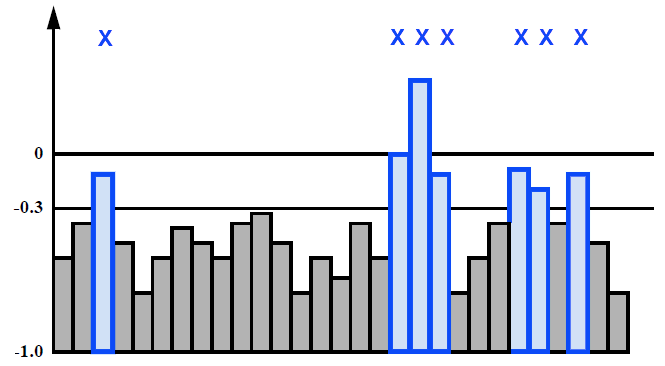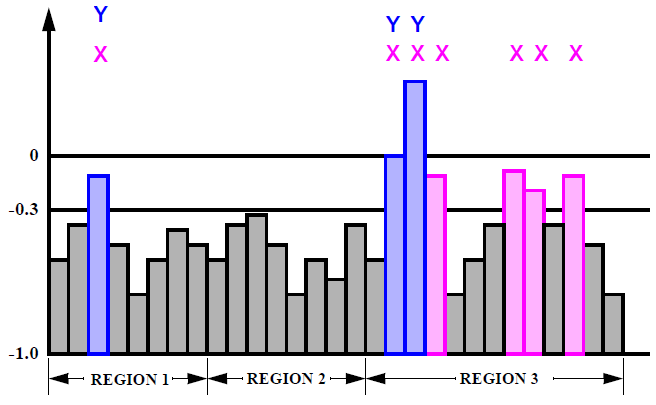Constraint Screening (DSCREEN)
DSCREEN is used to limit the number of constraints that are retained in given areas of the structure.
The design of real structures requires that a large number of constraints must be satisfied. The combination of variables can become large. Because the optimization process requires gradients of the constraints, this could lead to a costly design sensitivity process, far exceeding the cost of a single analysis. Therefore, the constraints are screened first, and only those that are critical or potentially critical for the current design cycle are retained.
This is a two-step process. First, all constraints that are more negative than, for example, -0.3 (not within 30% of being critical), are deleted. Next, the set of retained constraints is searched, and all but a specified subset in a given region of the structure is deleted. The reason for this is that many nearby points in the structure may have approximately the same response. However, only a few of these responses need to be retained to direct the design process.
Constraint screening is performed for each type of response: stress, displacement, and so on. There are two parameters for each constraint type that control the screening procedure: constraint Truncation threshold (TRS) and Max. retained constraints (NSTR).
Deletion Based on Constraint Value (TRS)
The first parameter TRS is used to define the value above which constraints are considered potentially critical. Constraints are retained if
(Response-UBi)/|UBi| >= TRS
or
(LBi-Response)/|LBi| >= TRS
where response is the response defined as constraint, and LBi and UBi are the bounds defined for the given constraint.
For example: Retain all constraints with a normalized value > -0.3. Delete all others.
The default TRS value is -0.5 which means that constraints that are within 50% of their critical value are considered potentially active.
If the design does not change much from design cycle to design cycle, this value can be raised, for example, to -0.2. Constraints must be within 20% of their critical value in order to be retained. If it is observed that constraints which are not retained in one design cycle are violated in the next design cycle, then the value of TRS should be lowered, for example, to -0.7. Constraints within 70% of their critical value are retained. The default value of -0.5 is quite conservative and usually prevents non-retained constraints from becoming violated.
Deletion Based on Regionalization (NSTR)
The second parameter NSTR that controls the constraint screening process is used to specify the maximum number of constraints to be retained in a specific region of the structure.
For example: Retain all constraints with a normalized value > -0.3. Also, retain no more than two constraints per region. Delete all others.
The default NSTR value is 20 per region per loadcase.


